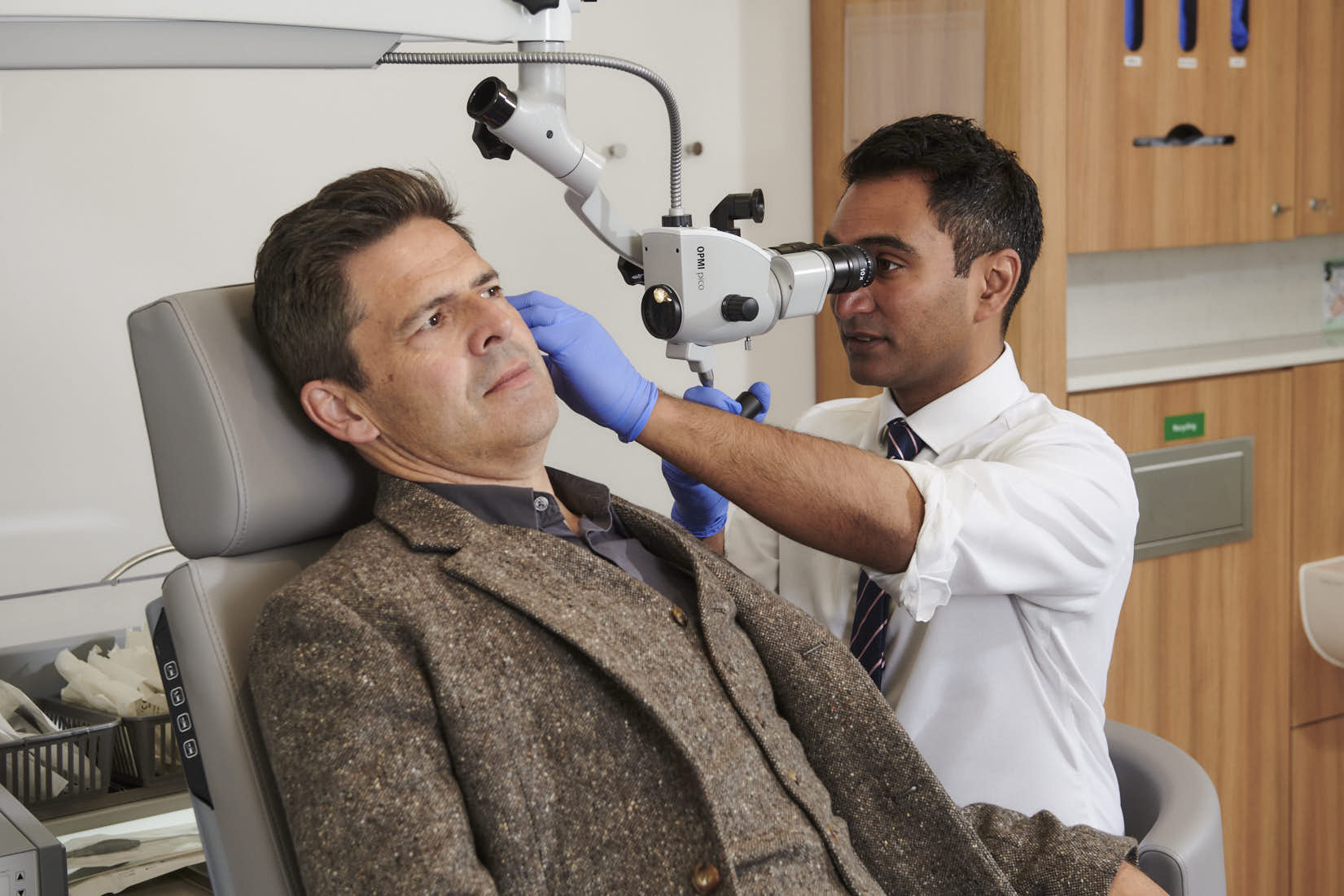This service or treatment is generally covered by most health insurance policies. You are responsible for checking your insurance policy cover, and you may need a referral letter. Check which insurance companies are covered.
Myringotomy
Myringotomy is a procedure performed by an ENT surgeon to drain the middle ear of fluid that may be causing hearing loss and pressure symptoms.

What is myringotomy?
Myringotomy is a surgical procedure performed by an ENT (ear, nose and throat) specialist where a small cut is made in the eardrum to relieve pressure caused by a build-up of fluid (water, blood or pus) in the middle ear.
In some cases, your surgeon may also place a grommet (small ventilation tube) into each incision that will remain in place to allow continued ventilation to the space behind the ear drum and prevent recurrent infections. This procedure is sometimes called tympanostomy.
Why is myringotomy performed?
Myringotomy can be used to treat a number of issues including:
- Frequent ear infections that don’t respond well to antibiotics
- Hearing loss or muffled hearing
- Ear barotrauma (pain in the ears caused by changes in air pressure)
- Bleeding from the ears due to trauma, severe infections or a ruptured eardrum
- Problems with balance
Preparing for myringotomy
Before having a myringotomy procedure you’ll meet with your ENT consultant for an initial consultation. They will examine your ear and eardrum and may also perform hearing tests and sometimes arrange scans if needed. It’s likely your consultant will also perform a test called a tympanogram which gives an indication of what the pressure is behind your ear drum.
Sometimes myringotomy can be performed in the clinic setting with local anaesthetic. In some circumstances a general anaesthetic may be used - if so, this would involve remaining nil by mouth (no food or drink) after midnight the night before the procedure. It’s advised to also arrange to have someone pick you up and take you home after your procedure in that scenario.
What does myringotomy involve?
Before starting the procedure your specialist will apply a local anaesthetic to the surface of the eardrum using a precision applicator. This will be left for a period of time to numb the eardrum before being suctioned away.
Your specialist will use a microscope to guide them in making a small incision in the eardrum using a special knife. Any fluid that drains out will be sucked away.
At this stage, your specialist may perform a tympanostomy to keep the incision open for a longer period of time. If this is not done, the small incision will close and heal on its own in a few days without the need for stitches.
Recovering from myringotomy
Once the local anaesthetic has worn off you may experience minor pain. Over-the-counter painkillers such as paracetamol and ibuprofen can help ease any discomfort you experience. Your specialist may also prescribe numbing ear drops for you to use at home.
If you have had a tympanostomy you may have some minor pain and feel a popping, pulsing or clicking when you chew or yawn while the eardrum heals around the grommets.
Your ears might feel clogged after the procedure but your hearing should improve in a few days and you will be fully recovered from a myringotomy in around 4 weeks. If you had a tympanostomy, the grommets should fall out on their own within 6 to 12 months.
To ensure successful recovery it’s important to follow any postoperative advice given by your consultant such as avoiding getting water in your ears, changing your dressings and taking any prescribed medications as directed.
Myringotomy risks
Complications are rare with this procedure, but possible documented complications may include:
- A hole in your eardrum that needs further surgery to close
- Hardening of your eardrum, causing hearing problems
- Injury to the ear canal
- Scarring of the eardrum
- Bleeding
- Infection
- Frequent drainage
Contact your specialist after the procedure if you have any of the following:
- Fever and chills
- Redness, swelling, worsening pain, excessive bleeding or discharge from your ear(s)
- Pain that you cannot control with the medications recommended by your specialist
- Drainage from the ear more than 4 days after surgery
- Impaired hearing
- A cough, shortness of breath or chest pain
- Severe nausea or vomiting
Book a consultation
Jul 2025
Currently selected day
Available consultations




